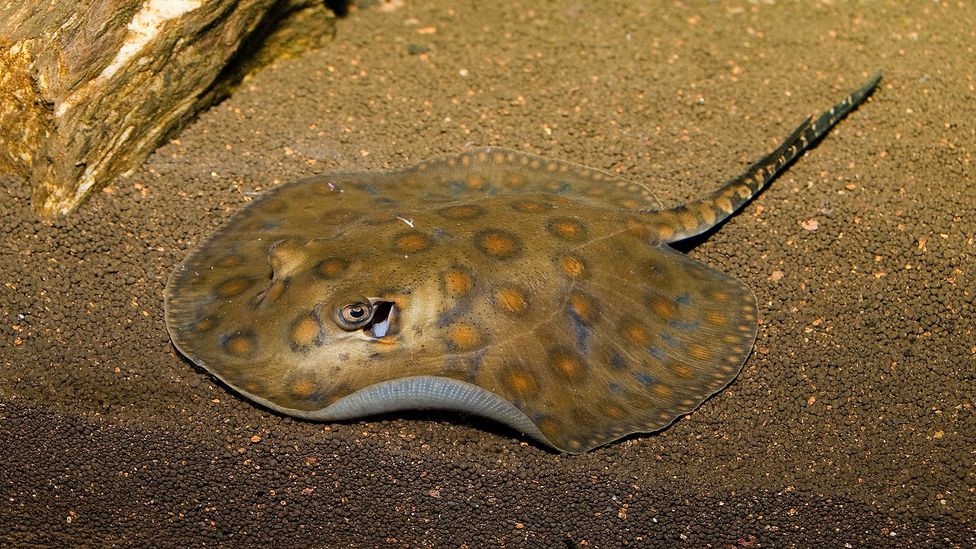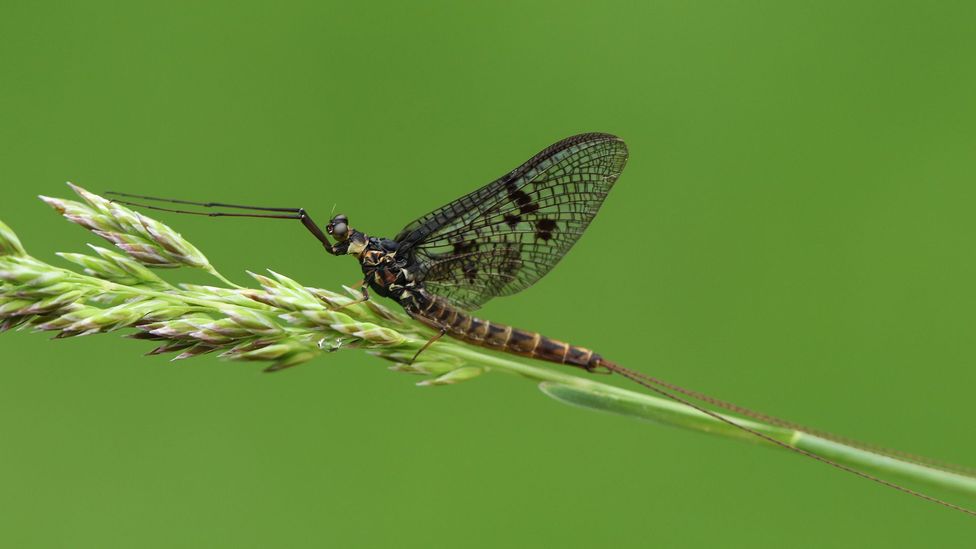 (Image credit:
(Image credit: It is an event that appears to defy the laws of nature. In February 2024, a female stingray, named Charlotte, fell pregnant at a small aquarium in Hendersonville, North Carolina, US – even though she had not encountered a male stingray in over eight years. It left scientists at the Team Ecco Aquarium & Shark Lab stumped.
How exactly Charlotte conceived four stingray pups, while floating around in her tank without a mate, was a mystery. One theory pointed the finger (or fin) at two white-spotted bamboo sharks who share the tank with Charlotte, due to some suspicious bite marks found on the stingray's body. Such marks can be a sign of mating behaviour in sharks.
But that would lead to an unusual shark-stingray hybrid. Instead, scientists believe the pregnancy could be the result of a rare phenomenon called parthenogenesis. Stemming from the Greek, parthénos, meaning "virgin", and genesis, meaning "creation", it is where an egg develops into an embryo without being fertilised by sperm.
Charlotte is far from being the first animal to have conceived alone. Parthenogenesis is quite common in insects, such as mayflies, although it is rarer in vertebrates. Since a captive bonnethead shark gave birth in 2001, more cases have been reported in sharks and reptiles. Charlotte is believed to be the first recorded incidence of a stingray to have undergone parthenogenesis.
Exactly why parthenogenesis occurs is something of a mystery. Some scientists suggest it is a "last ditch" attempt for females to pass their genetics onto offspring.

It is rare for vertebrates to undergo parthenogenesis, but a stingray in North Carolina appears to have fallen pregnant without a male (Credit: Getty Images)
"The goal of evolution is to pass your genes on," says Kevin Feldheim, a molecular biologist who uses genetics to study shark populations and mating behaviour at Chicago's Field Museum. "A female who is isolated from males, who would normally give birth by sexual reproduction, just doesn't have that opportunity."
Feldheim investigated another case of parthenogenesis among zebra sharks at Chicago's Shedd Aquarium in 2008. First, he had to rule out the possibility of promiscuity among the aquarium's inhabitants.
"There was no direct evidence that the males mated with the female, but unfortunately, the tank doesn't have cameras on it 24/7," he says. Figuring out shark parentage can be extra-complicated, as some female sharks can store sperm for months after mating, he adds.
Feldheim developed a paternity test to collect genetic markers called microsatellites. "These are used in human paternity cases, like in shows like CSI and NCIS," he says. The results confirmed that the zebra shark's offspring did not have any paternal DNA – only the female's.
"The obvious question was how can this happen? Well, the answer is by parthenogenesis," says Feldheim.
Some populations of whiptail lizard in Mexico and California have become all-female and reproduce asexually
In most cases of animal reproduction, eggs are produced in a process called meiosis, where the cells divide, sharing out genetic material and the other cellular machinery between them. This process generates three cellular offshoots called polar bodies. Normally, these polar bodies are reabsorbed by the female, but in parthenogenesis, one of those polar bodies can fertilise the egg and form a viable embryo, therefore mimicking sexual reproduction.
This is a different process to cloning and has drawbacks, adds Kady Lyons, a research scientist who studies sharks, skates and rays at the Georgia Aquarium.
"The cells that are being used are not a carbon copy of mum," she says. However, because both the egg and the polar body contain only parts of the mother's genome, the offspring end up less genetically diverse than their mother, as can be seen in a "highly inbred individual", she adds.
For some species, asexual reproduction is advantageous. For example, some populations of whiptail lizard in Mexico and California have become all-female and reproduce asexually. The species has evolved an unusual way of maintaining its genetic diversity through parthenogenesis by doubling the number of chromosomes in the eggs of asexually reproducing females. There are some advantages of this, allowing the species to colonise new areas and avoid pitfalls such as sexually transmitted diseases.
But this also comes at a cost – their DNA picks up more harmful genetic mutations through parthenogenesis than they do through sexual reproduction, due to the absence of natural selection.

It is common for mayflies to reproduce through parthenogenesis (Credit: Getty Images)
Unfortunately, not all species are as well adapted to parthenogenesis as the whiptail lizard. Offspring of parthenogenesis in sharks tend to be short lived, rarely reaching sexual maturity. "There's a lack of genetic variation in the offspring that could lead to what's called the expression of delirious recessive alleles," says Feldheim.
In other words, despite their miraculous conception, vertebrates born by parthenogenesis can be short lived.
Lyons was part of an artificial insemination trial in zebra sharks, where scientists studied the chances of survival between sexually produced and parthenogenetic pups. The study found parthenotes (individuals generated by parthenogenesis) lived on average for a year less, with many displaying behaviour that weakened their chances of survival, such as lopsided swimming, spinning, headstands, and difficulty feeding.
Lyons says she was not surprised to see evidence of parthenogenesis in stingrays, although Charlotte's case has not solved all the mysteries surrounding this phenomenon. "One thing we don't know is if there is a trigger to females reproducing this way. We just assume that when you have boys and girls together, that they're going to do their thing."
However, it's in these unique situations, such as having animals in human care, that parthenogenesis is occurring more frequently. "Obviously, life finds a way," she says.
- Get link
- X
- Other Apps
Labels
Environment- Get link
- X
- Other Apps
Comments
Post a Comment